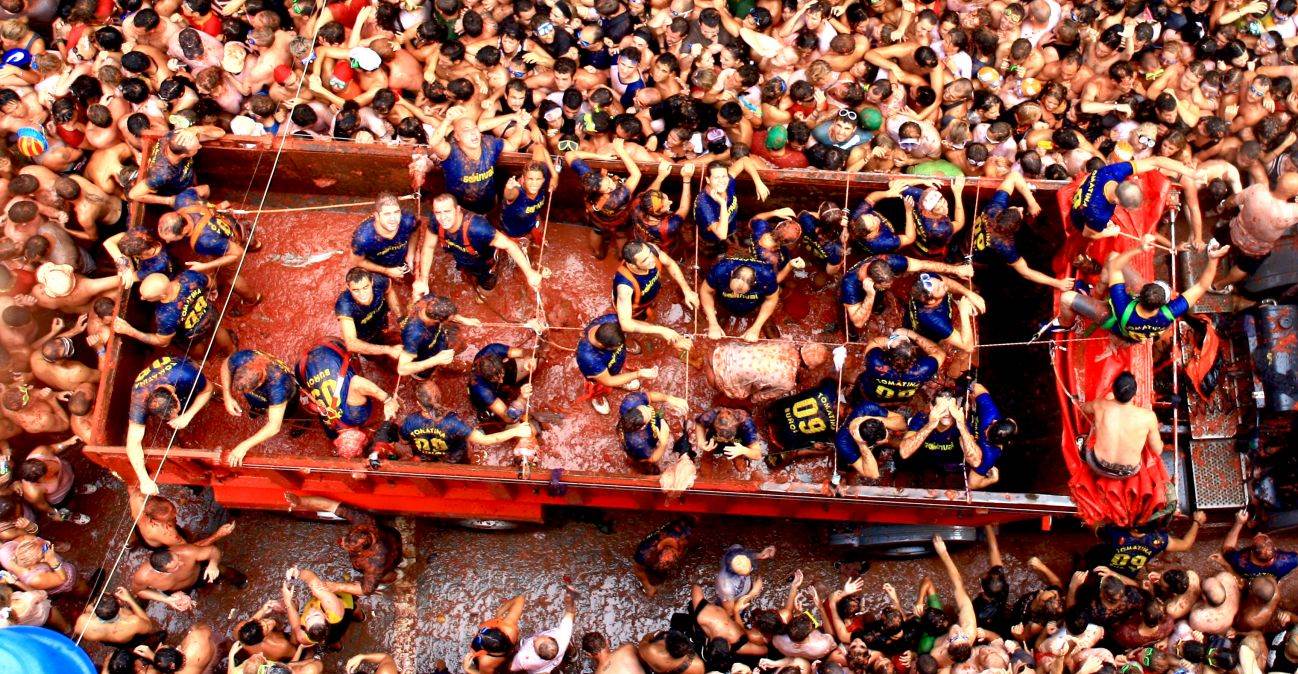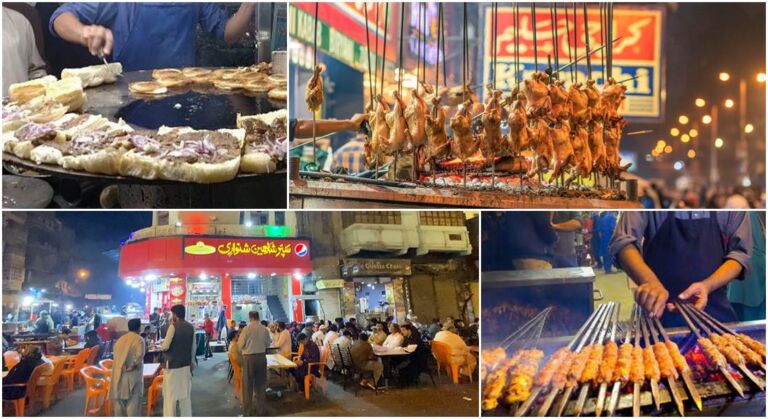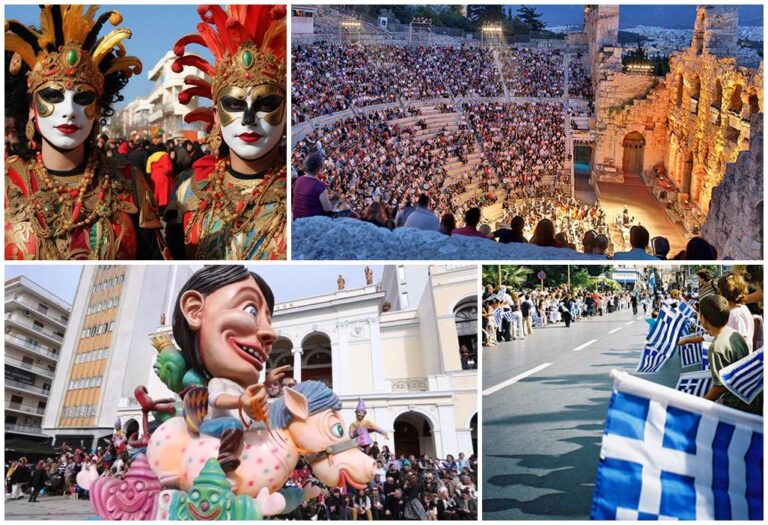La Tomatina is a well-known annual festival held in the town of Buñol, close to Valencia, Spain, rather than “La Tomito” festival. Some of the basic details about the festival of La Tomatina is given below:
Location:
La Tomatina Festival takes area in the city of Buñol, located in the province of Valencia, in the autonomous community of Valencia, Spain. Buñol is located about 38 kilometers (about 24 miles) west of the town of Valencia. Buñol is a small town famous for its picturesque streets, historic landmarks, and, its iconic tomato-throwing festival.
Date:
La Tomatina is held yearly on the last Wednesday of August. The festival normally begins around noon and lasts for about one hour, the festivities in Buñol continue throughout the day till the evening.
Fun Facts About La Tomatina Festival:
World’s Largest Tomato Fight:
La Tomatina is frequently known as the world’s biggest food fight. Thousands of participants from around the world gather in Buñol to throw overripe tomatoes at each other in a friendly and chaotic frenzy way.
Tomato Battle:
During the event, trucks are loaded with ripe tomatoes in the town square. After that those tomatoes are distributed to the participants. The tomato combat then ensues, with individuals hurling tomatoes at each different while striding through the streets covered in tomato pulp.
Tomato Supply:
Approximately 150,000 to 200,000 pounds (70 to ninety metric tons) of ripe tomatoes are used for the duration of La Tomatina every year. The tomatoes used for the pageant are mainly grown for the event and are not suit for consumption.
Rules For La Tomatina Festival:
While La Tomatina seems like a messy fun. However, there are specific safety rules to ensure the well-being of participants. Squashing tomatoes before throwing them in one of an important rule of the fight. Moreover, avert throwing objects other than tomatoes, and respect all participants equally during event.
Iconic Tradition:
La Tomatina has come to be one of Spain’s most well-known and cherished cultural events. The event is featured in several documentaries, television programs, and journey guides. Furthermore, it has strengthened Spain’s reputation as a must-see spectacle place for visitors from all over the world.
International Appeal:
La Tomatina has won worldwide attention and attracts thousands of visitors from globe every year. It has turn out to be one of Spain’s most iconic festivals, drawing vacationers and tourists enthusiastic to experience the exceptional and glossy atmosphere.
Cultural Significance:
While La Tomatina is in particular enjoyable and lighthearted event, it additionally holds cultural significance for the town of Buñol. The festival celebrates local traditions and serves as a symbol of community spirit and harmony.
The festival has an intriguing records that dates again to the mid-20th century. An overview of the history of La Tomatina is highlighted below:
Origin History:
Food Fight at a Parade:
One often cited story tells that La Tomatina started from a playful altercation during a local parade in Buñol in the late 1940s or early 1950s. According to this legend, a group of young locals engaged in a impulsive fruit fight, using tomatoes from a market stall as projectiles. The food combat used to be stated to be so entertaining and exciting that it grew to become an annual tradition.
Fight among Friends:
Another story suggests that this festival started out as a pleasant dispute among friends or neighbors in Buñol. It is believed that a playful argument spiraled into a tomato-throwing brawl, which was then repeated the following year as a form of recreation.
Political Protest:
Another interesting history suggest that La Tomatina may have originated as a structure of political protest or social commentary. In this interpretation, the tomato-throwing competition used to be viewed as a way for locals to vent their frustrations or express dissent in a carefree and non-violent manner.
Evolution:
Following the preliminary food fight, the individuals and bystanders loved the playful chaos so much that they determined to repeat the event the following year. With time, La Tomatina grew to be an annual tradition, gained reputation and attracted extra individuals each year. In 1980, the city council of Buñol formally diagnosed La Tomatina as a competition of national interest, cementing its vicinity as one of Spain’s most iconic cultural events.
Formalization:
By the late 1950s, it was established tournament on the Buñol calendar, albeit informally celebrated annually. In 1957, the local authorities tried to ban the festival, due to public safety and hygiene. However, the residents of Buñol defended their cherished tradition, and La Tomatina continued to take place, albeit with expanded oversight and regulations.
International Recognition:
In current years, La Tomatina has won worldwide prominence, drawing lots of tourists to Buñol each year. The festival has been featured in copious travel documentaries and television programs. Solidifying its repute as a must-see event for travelers to Spain.
Here are some of the activities one can anticipate for the duration of La Tomatina:
Pre-Festival Events:
Leading up to La Tomatina, Buñol hosts quite a number pre-festival celebrations, consisting of tune performances, cultural activities, and typical parades. These activities help construct excitement and keenness for the actual event.
Opening Ceremonies:
La Tomatina usually starts with opening ceremonies, which consist of speeches, music, and ceremonial rituals. These ceremonies mark the official start of the festival and set the stage for the tomato fight.
Tomato Parade:
Before the tomato fight begins, when participants join the festive parade in the streets of Buñol. The parade regularly aspects vibrant floats, music, dancing, and passionate crowds, developing a lively and celebratory atmosphere.
Tomato Battle:
City square is filled with Thousands of participants, where the place with loaded trucks of ripe tomatoes then distributed among people as their ammunition. Once the sign is given, the tomato fighting begins, with participants throwing tomatoes at each other in a chaotic fight.
Street Parties:
Following the tomato fight, the streets of Buñol come alive with avenue parties. Furthermore, the Participants and spectators accumulate to socialize and dance to fully enjoy their evenings. The surroundings is also witnessed with its festive and jubilant life in the aftermath of the tomato battle.
Cleaning Efforts:
As soon as the festival ends, the festivities is concluded by volunteers and local authorities seen in working together to clean up the streets of Buñol. This community effort demonstrates the town’s commitment to environmental duty and ensures that the streets are safe and clean for residents and visitors alike.
Post-Festival Activities:
In addition to the festival, attendees can explore the town of Buñol and its nearby areas, go to surrounded attractions, and pattern normal Spanish cuisine. Nearby cities such as Valencia offer additional sightseeing possibilities and cultural experiences for visitors.














+ There are no comments
Add yours